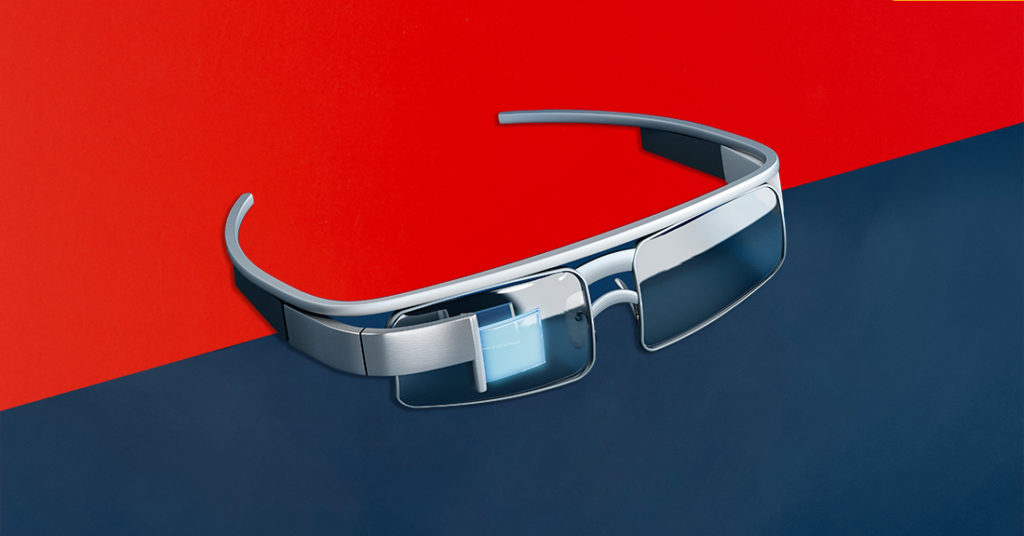
What’s New and What’s Coming in Wearable Tech
There are few things as futuristic as wearable technology. Smartphones are just attractive, portable computers. A smart ring that tracks your sleep and a smart bikini that tells you when you’ve had too much sun? That’s something much cooler.
Here’s some of the most exciting new wearable tech that’s available now in 2021—or coming soon.
What is wearable technology?
Wearable technology is exactly what it sounds like. It encompasses everything from smartwatches and fitness tracking wristbands to augmented reality sunglasses and socks that monitor your health.
The big promise of wearable tech is that because it’s easy to carry on your person, you can always have it with you. That’s why it’s commonly used for health and fitness tracking: Your Fitbit can monitor your heart rate all day without you having to do a thing.
Most wearable tech connects to your smartphone over Bluetooth. There’s normally a custom app that enables you to set up, configure and control everything. There are a few devices, especially smartwatches, that have their own Wi-Fi, LTE or 5G data connection, but they’re less common.
The biggest downside to a lot of wearable tech is that they need batteries. Some devices last for months, but the majority need to be charged at least weekly. (The Apple Watch needs to be charged daily.)
Now, let’s look at what’s new in the world of wearables.
Smartwatches are getting smarter
Smartwatches are some of the most popular wearables, and it’s easy to see why. They’re big enough that you can read and respond to messages, control your smart home with an app or track your workouts, but you barely notice you’re wearing one. Like the best smart devices, the best smartwatches slip seamlessly into your life.
The next generation of smartwatches are going to do the same, but they’ll do it better. More watches, like the Fossil Gen 5 LTE and Apple Watch Series 6, have their own data connection so you can make calls and use the internet without your smartphone. They have better battery life, so you’ll be able to wear them for longer without having to recharge.
Also, expect smartwatches to start passively tracking more health and wellness metrics. The Apple Watch Series 6 tracks blood oxygen saturation, and the Series 7—due to be released this year—is rumored to have noninvasive blood glucose monitoring.
Smart glasses are back, baby
Smart glasses seem an obvious wearable, but they have a fraught history. Google Glass was roundly criticized when it launched a few years ago, Snapchat’s Spectacles haven’t been much of a success and VR headsets, like the Oculus Quest 2, are a great gaming add-on but are too bulky to wear around.
Now, though, smart glasses are making a comeback. Really interesting enterprise options, like the Vuzix M4000 and Lenovo ThinkReality A3, were announced at CES 2021, promising to bring augmented reality (AR) to workplaces around the world. (And presumably, the technology will trickle down to regular consumers.)
And some are already out there, like the JLabs JBuds Frames. They’re wireless speakers that attach to any glasses frame, so you can listen to music or make calls.
Smart jewelry keeps smart small
Smartwatches and fitness tracking wristbands are great, but they can be a bit…in your face. If you want some of the same features but in a smaller, nicer package, smart jewelry is where it’s at.
The Oura Ring, for example, is one of the best examples of wearable health tech. It tracks your sleep, heart rate and overall wellness, without drawing attention to itself. It looks just like a regular ring.
The Bellabeat Leaf takes a different approach. Rather than going for purely functional, it’s got a bold design and can be worn as a pendant, bracelet or clip—while it tracks your activity, sleep, stress and reproductive health.
Sport performance tracking is getting serious
Tracking steps and stairs climbed is all well and good for most people, but if you’re a serious athlete (or just like wearing Lycra) then you probably want more detailed, sport-specific metrics. And, whatever your sport, there’s probably some awesome wearable tech to choose from.
Like running? Stryd, a power monitor that clips to your shoe, is the hottest piece of running wearable tech. For skiers, Skeo Snowcookies clip to your body and skis and monitor your form through turns. Tennis players can check out the Babolat Play, while Athos has a line of smart clothing that tracks how hard your muscles are working when you lift weights. No doubt, whatever your favorite activity, there’s probably a wearable that can give you a detailed performance breakdown—or there soon will be.
Serious, round-the-clock health monitoring is on the way
It’s not just athletes who will benefit from the best wearables. Wearable health tech looks set to be a revolution. This kind of health tech will enable things like noninvasive 24-hour monitoring of different vital signs, at-home interventions and smart alerts when things go wrong.
For example, Bioheart is an advanced heart monitoring device that will be available later this year; it takes a continuous ECG while you wear it. Innovo is a pelvic floor trainer—in a pair of shorts. And Siren Socks monitor foot temperature to let patients with neuropathy know when they’re at risk of an injury they might not otherwise feel.
Smart clothing (finally) has promise
Smart clothing has had a slow start—it’s just hard to get the sensors and batteries needed into a shirt you can wear on a daily basis—but it’s beginning to get more exciting.
Google’s Jacquard project is still going, and its collaboration with Levi’s on the Trucker Jacket is still available in some sizes. There’s hope they might release an update or something new later this year.
Smart masks are a really promising category. Razer, a PC gaming company, just demoed a prototype mask called Project Hazel. It’s built around a surgical N95 respirator but has a ventilator for active filtration and a charging case that automatically sterilizes it. It’s basically a wearable air purifier. MaskFone, available now, takes a simpler approach: They’ve added earbuds and a microphone to a washable face mask. Then there’s the Active+ Halo Smart Mask from AirPop, which tracks your breathing rate and the local air quality—it’s great for city dwellers who are exposed to traffic pollution on a daily basis.
And, of course, there are those Neviano smart bikinis from Spinali Design, which have a sensor that tracks your UV exposure and can send you a notification when you’re at risk of getting burned.
Wearable future
Wearables are likely to be one of the biggest areas of consumer tech over the next decade. Combined with smart home products like smart speakers and smart bulbs, we look set to live in a much more connected future—indoors and out.
Product features may have changed and are subject to change.




Join the conversation